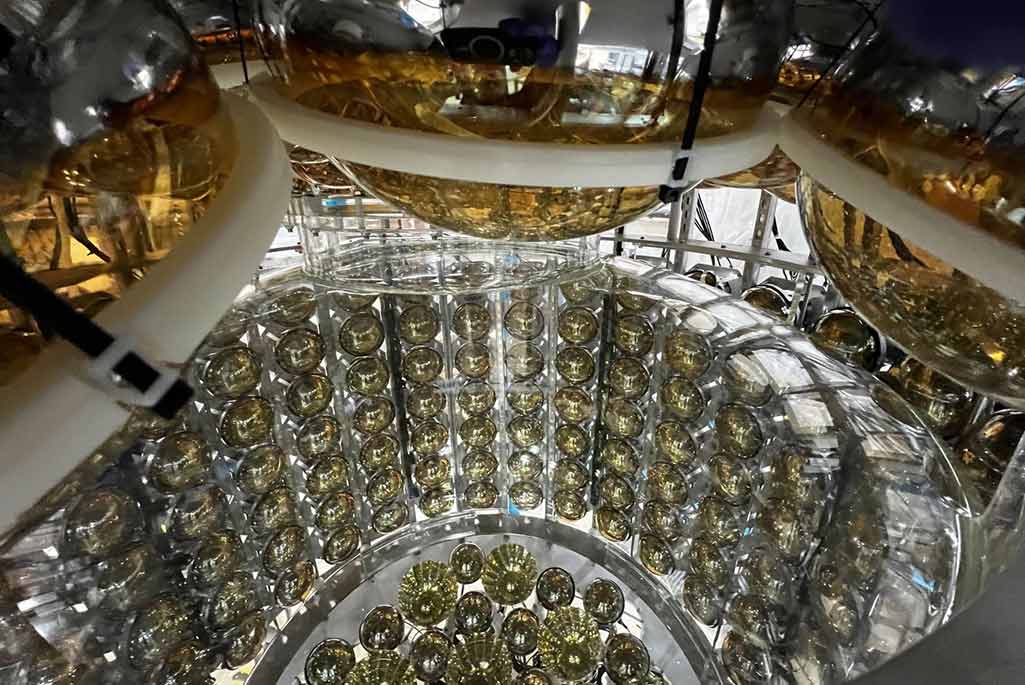A new type of neutrino detector now being tested in a vast underground lab at the University of California, Berkeley, is designed to leverage the latest technologies to enhance the sensitivity and capabilities of antineutrino detectors. Such improved detectors would not only help detect, localize and characterize undeclared special nuclear material being used contrary to federal or international regulations, but also help scientists explore the fundamental physics of particles and their interactions deep in the nucleus of the atom.
Called Eos, for the Titan goddess of dawn, the apparatus signals “the dawn of a new era of neutrino detection technology,” according to Gabriel Orebi Gann, a faculty scientist in Berkeley Lab’s Nuclear Science Division, an associate professor of physics at UC Berkeley, and the leader of the Eos collaboration.
Eos is a 10-meter tall, 5-meter-wide cylinder filled with water and an organic scintillator and surrounded by light detectors three times more sensitive than those used in physics experiments today. Eos’s improved sensitivity and higher resolution come from combining two of today’s best techniques for detecting neutrinos: scintillation and Cherenkov emission.
The improvements could be a game changer for future neutrino physics projects, such as the Deep Underground Neutrino Experiment (DUNE) now being constructed in an abandoned gold mine in Lead, South Dakota, to detect neutrinos emitted by a particle accelerator at Fermi National Laboratory, 500 miles away in Illinois. UC Berkeley and Berkeley Lab are members of the DUNE collaboration.
“What we would ultimately like to build is a much bigger detector called Theia,” she said. “Theia is the Titan goddess of light and Eos’s mother in the pantheon of gods. The ideal location for Theia is in that mine in South Dakota, seeing those neutrinos from Fermilab.”
The prototype detector is funded by the National Nuclear Security Administration, which funds research and development at Department of Energy (DOE) labs to further the nation’s ability to detect, prevent, counter and respond to nuclear security threats — in the case of this research, to detect and characterize nuclear activities and materials remotely, that is, at distances greater than about 100 meters. While radioactivity from nuclear material can be shielded from detection, antineutrinos produced in fission reactions cannot. Because billions are produced in a reactor each nanosecond, Eos should be able to detect enough of them to identify clandestine production of bomb-grade material.
Read the full article:
Tests begin on sensitive neutrino detector for nonproliferation as well as physics
March 15, 2024 / Bob Sanders / UC Berkeley News
